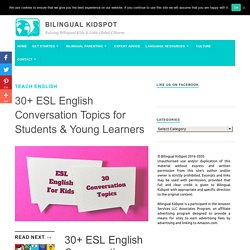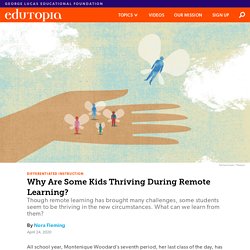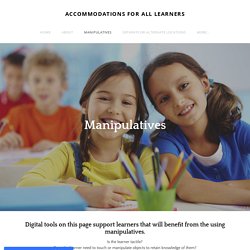

How Do You Know When A Teaching Strategy Is Most Effective? John Hattie Has An Idea. “In fact, if we can increase their sense of love of learning, the thrill, we can increase their sense of self,” Hattie said. In other words, skill, will and thrill, the three inputs students all have, sometimes work in harmony, but even when that doesn’t happen each aspect of a student is worth developing individually, too. THE LEARNING MODEL Hattie and Donoghue have tried to take everything they have learned through meta analyses to understand why some strategies that educators swear by, like project-based learning, have low effect sizes in the literature. In their paper and discussions of this proposed model it can seem like a linear progression of learning, but Hattie takes pains to point out that this model is only a conjecture and that the processes he’s describing could be happening in cycles within one learning experience.
The Science of Learning paper aims to propose the model, but also points out many ways that some of its claims could be further studied. How Ending Behavior Rewards Helped One School Focus on Student Motivation and Character. Valleroy decided to change the school’s culture in 2007, after she and other educators on her staff attended conferences on character education, including events hosted by Leadership Academy in Character Education at the University of Missouri-St. Louis. Inspired by what she’d learned, especially about the corrosive effect of rewards, she returned to Northview and launched a character education committee and school leadership team. Bible for kids, Child teaching, Teaching kids. The Geo-Inquiry Process. Teaching Young Students How to Use Multiple Sources. For young students who haven’t conducted research before, deciphering and synthesizing multiple sources—and making connections between them—can be tricky, write literacy experts Martha Polley and Sunday Cummins, who share an approach for boosting these skills in the classroom in “Students Making Sense of Multiple Sources” for MiddleWeb.

30 ESL English Conversation Topics for Students & Young Learners. Last Updated on April 22, 2020.

Why Are Some Kids Thriving During Remote Learning? We’ve been hearing that a lot.

Increasingly, teachers in our audience are reporting that a handful of their students—shy kids, hyperactive kids, highly creative kids—are suddenly doing better with remote learning than they were doing in the physical classroom. “It’s been awesome to see some of my kids finally find their niche in education,” said Holli Ross, a first-year high school teacher in northern California, echoing the sentiments of dozens of teachers we’ve heard from. That’s not to say it’s the norm. Many students are struggling to adapt to remote learning: Digital access and connectivity remain a pervasive equity issue; stay-at-home orders have magnified existing problems in familial dynamics; and, universally, teachers and students grapple with how to replicate the engagement and discourse from an in-person classroom.
4 Key Aspects of Teaching a K–12 Online Class. Building a successful virtual learning program can help teachers and students grow.

Having taught in the virtual space throughout my education career, I’ve found, like others, that doing so requires a combination of characteristics: expertise in lesson planning and assessment, adaptability in what learning can look like in a virtual space, and a belief in students’ ability to rise to a challenge with support. Ultimately, we want students to take ownership of and lead their learning, and that’s even more necessary in a virtual space. Where physical classrooms offer face-to-face activities that the teacher can readily observe and monitor, in virtual classrooms students are physically separated from their peers and teacher, so teachers need to be very intentional about monitoring how students are doing. Here are key aspects of building a virtual learning culture that are discussed below:
Lessons Worth Sharing. Dyslexic Accommodations - ACCOMMODATIONS FOR ALL LEARNERS. Alternate Format of Assignments - ACCOMMODATIONS FOR ALL LEARNERS. Digital tools on this page support learners that will benefit from alternate formats for assignments.

Manipulatives - ACCOMMODATIONS FOR ALL LEARNERS. Digital tools on this page support learners that will benefit from the using manipulatives.

Is the learner tactile? Does the learner need to touch or manipulate objects to retain knowledge of them? Would the manipulation of physical objects help an easily distracted learner to remain more focused? Does the learner need concrete tasks in order to learn and retain information? Open Digital Manipulatives These manipulatives can be used for multiple purposes depending on the task the learn must complete. The Best Nature Webcams for Science Learning at a Distance. Kids can learn a lot from observing animals, from what they eat and how they raise their young—to more advanced concepts like habitats and adaptations.

Unfortunately, getting access to live animals is a challenge. Enter webcams. We compiled a list of the best nature webcams that offer kids a window into the animal world… so check it out! Zoo Atlanta Panda Cam These gentle giants eat almost exclusively bamboo … and if this webcam is any indication, they do it all day long. California Academy of Sciences Penguin Cam Let the waddling commence! Monterey Bay Aquarium Jelly Cam These beauties are as mesmerizing as they are dangerous. Seattle Aquarium Sea Otter Cam The Seattle Aquarium is home to four northern sea otters. Cornell Lab FeederWatch Cam This FeederWatch cam is located at the Cornell Lab of Ornithology in Ithaca, New York on the edge of the Sapsucker Woods. RoyalCam Live Albatross Cam Albatrosses are large oceanic birds with wingspans up to 10 feet. Raptor Resource Project Decorah Eagles.